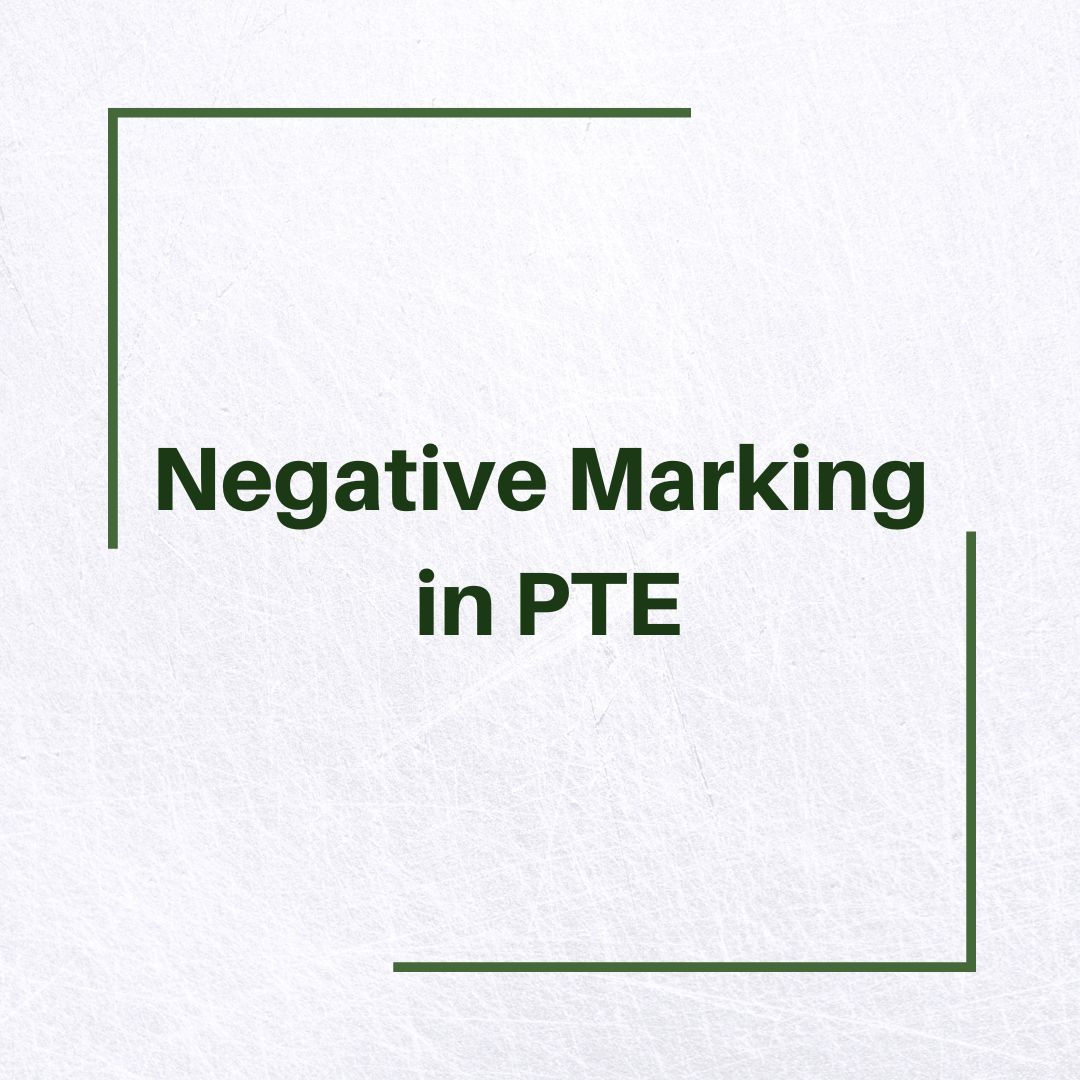What is Negative Marking in PTE?
The PTE General and Academic are generally conducted online. The exam consists of reading, listening, writing, and speaking sections. The examinees use AI (artificial intelligence) to assess the answers and deduce scores.
PTE has negative markings in its reading and listening sections, unlike many other competitive government and international exams. Candidates attempting the exam will lose a mark if they answer incorrectly.
Even a single mark can make a huge difference in the overall grades of the PTE exam takers. It can deduce whether they are eligible to study or move abroad. Negative markings also ensure fairness, objectivity, and reliability.
Formats of Questions with Negative Marking in PTE:-
As mentioned before, the listening and reading sections of the PTE exam consist of negative markings. To further elaborate, the listening part of the exam comprises multiple choice questions, highlighting correct words or choosing multiple answers.
In recent years, it has been noticed that these three formats of questions in the listening section of the PTE have negative markings. Similarly, the reading part of the exam also incorporates negative marks in Multiple Choice Questions (MCQs) or multiple-answer question formats.
Read about– best app for PTE preparation.
Scoring Formats
The PTE scoring is very different from many other competitive exams. It consists of one mark for the correct answer and a deduction of one mark for a wrong answer. Simultaneously, it has a minimum mark parameter of zero.
Therefore, if you have chosen one wrong answer and two right ones, your total score would be 1 (1+1 – 1). However, if the scenario is reversed, i.e., two wrong answers and one correct, the overall result would be zero even though it comes down to -1 (-1, -1, and 1).
The overall result of the second scenario is zero because the minimum mark for an answer is zero. PTE attempters would be delighted to learn that they won’t be negatively scored if they skip an answer. The scoring system in the PTE is referred to as partial credit, as the candidates receive positive marks for correct answers and zero deductions for skipping or not selecting an option, with a minimum mark of zero instead of negative.
How to Avoid Negative Marking in PTE exam?
The first step is understanding the formats of the questions asked in the PTE reading and listening sections. Since the two sections have multiple-choice questions or multiple-choice answers, it is essential to understand the types of passages in which such answers are required.
Before moving ahead with this step, deciding whether you are preparing for PTE General or Academic is crucial. The passages are vastly different in each of them. Once decided, attempt mock tests, hire an English coach online, and build a study plan to overcome areas of improvement.
Even though you might think that leaving an answer might help you avoid negative marks, it also takes away your chance to score higher or the highest. As a result, someone else might achieve higher grades than you and leaving the answer no longer remains optional for you.
